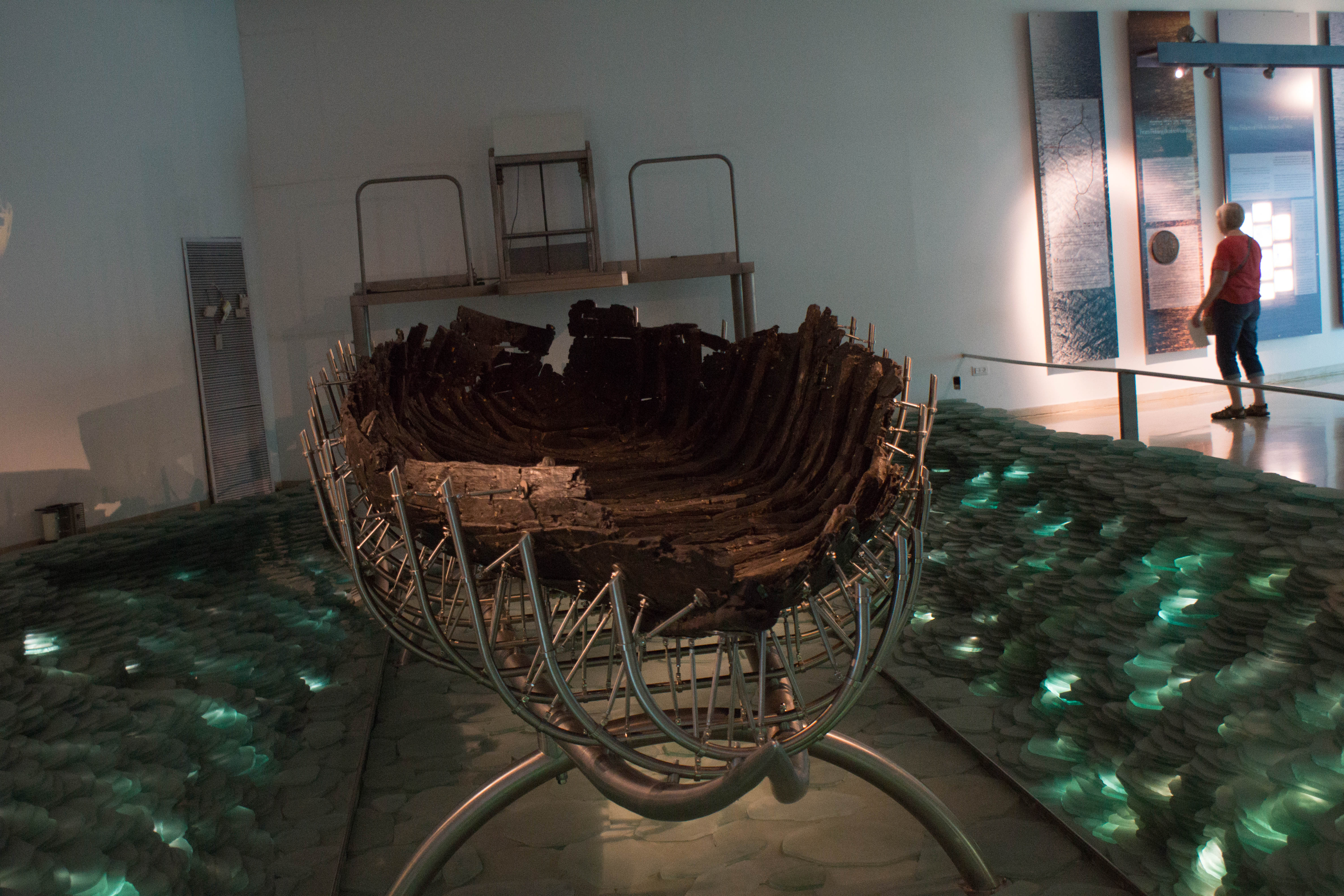Ginosar and the First Century Boat
 (historical artifact / museum) Coordinates: 32°50′51.35″N 35°31′22.43″E / Elevation -680
(historical artifact / museum) Coordinates: 32°50′51.35″N 35°31′22.43″E / Elevation -680

Sea of Galilee (geographical feature)
Hebrew: Yam Kinneret / Arabic: Buhayrat Tabariyya
also known as Lake Tiberias and Sea of Gennesaret(h)
Coordinates: 32°50′N 35°35′E / Elevation -686
The Sea of Galilee is the lowest freshwater lake on earth and the second lowest body of water (the lowest being the Dead Sea). In geologic terms, “sea” is a misnomer as “sea” normally applies to salt bodies of water; Galilee is fresh water, more precisely, it is a lake. The Jewish name for the lake is “Kinneret”, and may be related to the Hebrew word for harp (“kinnor”), which the lake resembles. The lake is fed by a number of underground springs and by the Jordan River, which follows the Great Rift, entering at the north end of the lake and exiting at the southern end as it heads to Africa. Surrounded by hills on all sides, the sea is prone to sudden storms that can appear without warning. As during New Testament times, the sea continues to be plentiful in fish, especially tilapia (St Peter’s Fish), which is considered a local delicacy.
Sea of Galilee in the Bible: The Sea of Galilee figures prominently in the Bible, especially in the New Testament – in part because the cities of the Galilees where Jesus began his ministry are mostly on or near the shores of the lake. A number of Jesus’ miracles took place in view of Galilee, including Walking on Water (Matthew 14:22-33), Calming the Storm (Matthew 8:23-27), Shekels in the Fish (Matthew 17:24-27), and the Large Catch of Fish (Luke 5:1-11). Many of Jesus’ disciples came from towns on the Galilee, including Peter, Andrew (Capernaum), James and John (Bethsaida). Mary Magdalene too came from a Galilean seacoast town (Magdala).
Sea of Galilee in History: As noted in the section on Tiberias, the lake and its environs played a major part in Israel’s history. Herod Antipas was awarded the region known as the Galilees by Tiberias Caesar. Politically, the region was a mix of allegiance, with two of the major cities being firmly Hellenized. Most of the other towns in the region were fiercely anti-Herod and anti-Rome. These paid dearly when the revolt against Rome finally broke out in 66AD.
View the Gallery of Galilee
Related
Categories: Locations
Tags: Ginosaur.







Comments are closed.